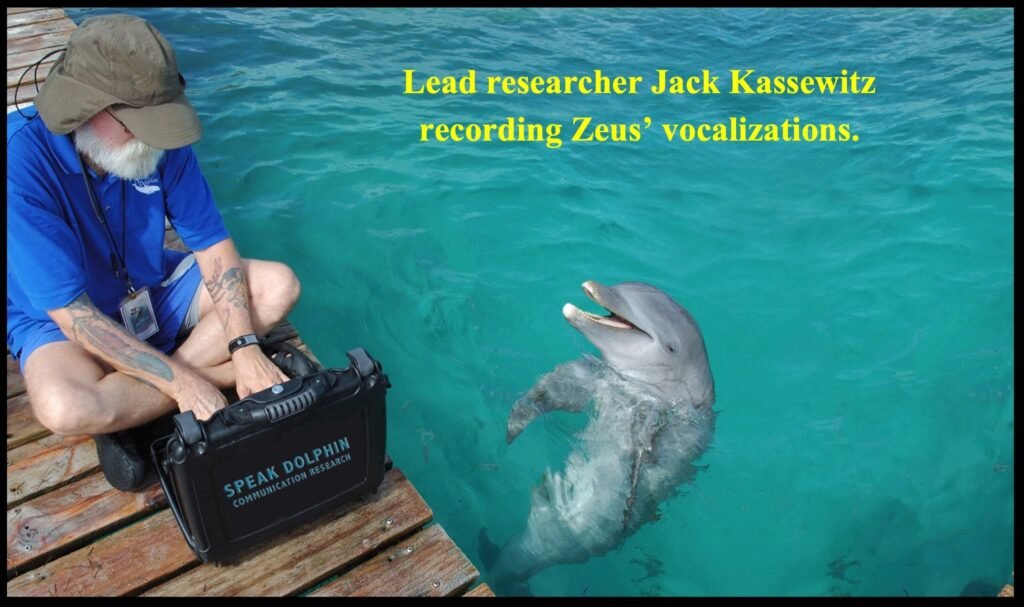Could dolphins be trying to communicate with humans on purpose? According to a recently published scientific paper, one dolphin named Zeus might already be doing just that.
First released on February 25, 2025, the paper titled Novel Dolphin Vocalization appeared on ResearchGate and SpeakDolphin, then was made globally accessible on April 22—Earth Day—through JJPublishing.org. Before the news of Google’s AI model emerged, this study had already reached thousands of scientists and marine researchers.
The research, led by Jack Kassewitz of the organization SpeakDolphin, documents how Zeus mimicked human vowel sounds—specifically A, E, O, and U. What sets Zeus apart is his context and intention: he vocalized with his head above water, directly addressing the human team.
“I missed it at first,” Kassewitz shared. “Dolphins process sound much faster than we do, and their acoustic patterns are so quick that we often overlook them in the moment.”
Intentional Surface Speech

Most dolphin vocalizations happen underwater during social interaction. Zeus, however, vocalized above water—intentionally.
“When dolphins vocalize above the water surface, it is almost certainly to get the attention of nearby humans,” Kassewitz explained. “Zeus’ vowel vocalizations—made with his head above water and directed at our research team—demonstrated how intentional his efforts were.”
The team emphasized that this wasn’t just mimicry. Zeus appeared to be initiating communication with humans—making the possibility of two-way interaction more tangible.
AI Enters the Chat—But Dolphins Are Already Talking

Shortly after the study was widely distributed, Google introduced DolphinGemma, an AI model built to understand and replicate dolphin language. Developed in collaboration with DeepMind, Georgia Tech, and The Wild Dolphin Project, DolphinGemma analyzes dolphin sounds and clusters them by behavioral context—such as “squawks” during conflict or “buzzes” during courtship.
While researchers welcomed Google’s efforts, SpeakDolphin believes its team is already ahead.
“AI can mimic sounds,” the researchers wrote, “but can it spontaneously ask a dolphin for a kiss—or respond to a dolphin’s request for one? We have.”
They also hinted at more revelations in their upcoming paper The Emoji Games, which explores actual conversations between dolphins and humans using symbolic references.
“We’re not just echoing ‘seaweed,’” Kassewitz noted. “We’re discussing whether our dolphin friends would like some seaweed from us—or would they prefer to share theirs with us.”
Could Conversations With Dolphins Be Next?
While full conversations may still be years away, these developments bring scientists closer to a working two-way language with dolphins. For decades, researchers have observed dolphins attempting to mimic human sounds—but now, tools like AI and detailed acoustic analysis are finally allowing them to respond in kind.
The future of interspecies communication may just be a whistle, buzz, or vowel away.







